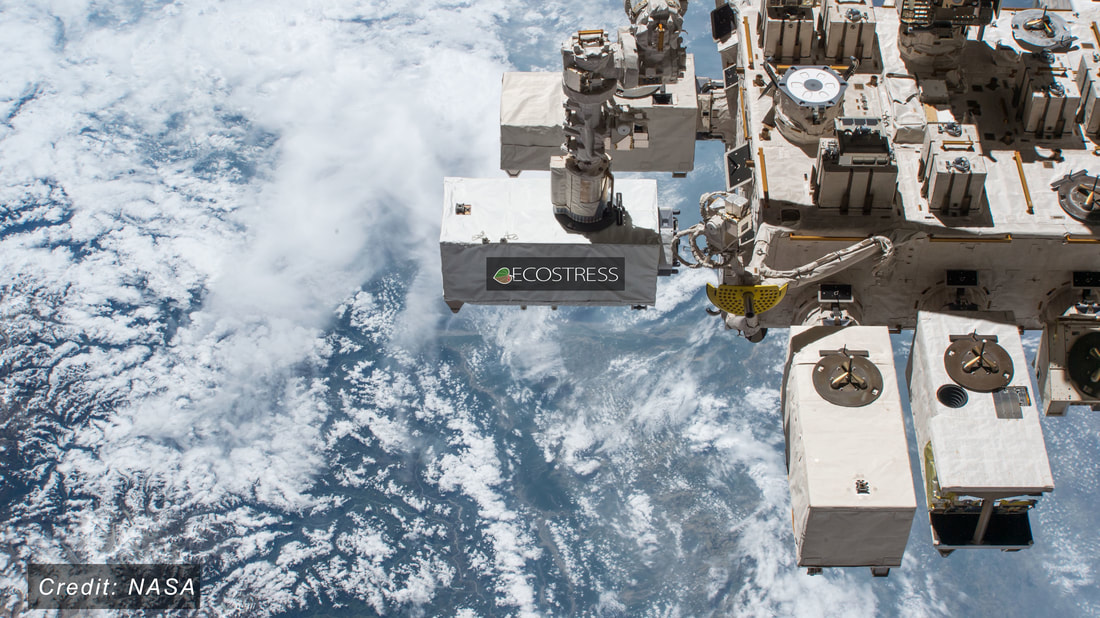In this first-of-its kind study, “Convergence in water use efficiency within plant functional types across contrasting climates,” published on April 14th in the prestigious journal Nature Plants, the authors found that plants of the same type (such as deciduous broadleaf and evergreen needleleaf trees, tall or low shrubs, herbs and non-herbaceous grasses, etc.) often had very similar water-use efficiency regardless of where they grew. Interestingly, the results indicate that it is the type of plants, rather than the climate in which they are growing, that dictates the water-use efficiency. The results also indicate that plant types with longer lifespans, such as shrubs and trees, have higher water-use efficiency than plant types like grasses, which have shorter lifespans. These findings provide important insights into how global climate change will shape the future of plant communities and the ecosystem services they provide.
Plants use and lose water when they take up carbon dioxide to photosynthesize and grow. Plant species capable of growing more while using less water may be more resilient to the increasing frequency, intensity and duration of drought events projected to occur with global climate change. The study also reveals connections in how environmental conditions can shape current and future plant community characteristics, key for understanding the future of plant biodiversity. Knowing how different plant types optimize the tradeoffs between growth and water use, the so-called plant water-use efficiency, can inform plans to mitigate and adapt to a warmer and drier future.
This type of analysis was enabled by the data collected from the ISS instrument, known as ECOSTRESS, which provides the most detailed temperature images of Earth’s surface ever acquired from space. These temperature images indicate evapotranspiration and photosynthesis rates. Previously, the low-resolution of available data and disagreements among different land surface models led to wildly varying measurements of water-use efficiency.
“ECOSTRESS revealed patterns that we could not observe with previous satellite instruments and that would be impossible to measure on the ground,” said lead JPL author Ms. Savannah Cooley. For instance, using ECOSTRESS images from the Brazilian Amazon, the study demonstrated significant variation in water-use efficiency by plant type over the scale of just a few miles of seemingly similar tropical rainforest, as well as abrupt changes where forests had been converted to pasture.
The data originate from ECOSTRESS, the ECOsystem Spaceborne Thermal Radiometer Experiment on Space Station, a mission launched by NASA in 2018 to provide information on global land surface temperature at unprecedented spatial and temporal resolutions. ECOSTRESS was built by NASA’s Jet Propulsion Laboratory (JPL) and launched into orbit aboard a SpaceX Dragon cargo spacecraft lifted by a Falcon 9 rocket. ECOSTRESS now sends images at a resolution less than that of a football field every 2-3 days.
“ECOSTRESS is remarkable in that it allows us to determine plant water use nearly anywhere on Earth at spatial scales that were unthinkable just a few years ago, all from an instrument that is traveling more than 17,000 miles per hour more than 250 miles above us,” noted study co-author Dr. Joshua Fisher.
The new study was led by Ms. Savannah Cooley, a graduate student at Columbia University and scientist at JPL, in collaboration with Dr. Joshua Fisher and Dr. Gregory Goldsmith at Chapman University. Fisher is a Presidential Fellow of Ecosystem Science in Schmid College of Science and Technology; he was the Science Lead for ECOSTRESS while at JPL prior to joining Chapman. Fisher is the first faculty member in Chapman University’s history to be named a highly cited researcher by Clarivate, placing him in the top 1% of researchers globally. Goldsmith is an Assistant Professor of Biological Sciences and Director of the Grand Challenges Initiative; he is a member of NASA’s ECOSTRESS Science and Applications Team.
Measurements provided by ECOSTRESS are also useful for detecting wildfires, urban heat waves, volcanic activity, and a number of other applications.
###
The title of the paper is “Convergence in water use efficiency within plant functional types across contrasting climates,” and is available online at: https://www.nature.com/articles/s41477-022-01131-z. Support was provided by the ECOSTRESS mission and by the NASA Research Opportunities in Space and Earth Science grant # 80NSSC20K0216.

 RSS Feed
RSS Feed
